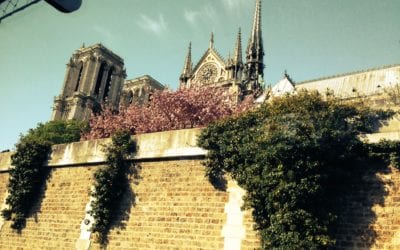Automobiles clog city streets that were built for pedestrians and bicycles. Billboards that recently touted the benefits of socialism now advertise designer clothes and the latest electronic gadgets. Vendors sell dumplings, noodles and unidentifiable body parts of animals off wooden carts parked in front of KFC, McDonald’s and other American-based fast food restaurants.
A recent return trip to China, more than 20 years after my first visit, resembled a back-to-the-future experience. Like the rest of the country, Shandong Province, perched on a peninsula jutting into the Yellow Sea southeast of Beijing, offers a study in contrasts. In cities, modern skyscrapers stretch as far as the eye can see. Members of the “millennial” generation sporting the latest fashions are glued to their cell phones.

As the capital and transportation hub of Shandong Province, Jinan (Dze-nahn) is the logical starting point for a tour. Overseas visitors to this area of China usually land in Beijing, and there are frequent flights and trains, including sleek high-speed trains, between China’s capital city of Beijing and Jinan.
However, I found much more of interest to see outside of Jinan, which is a large, bustling city. Its major claim to fame is a reputation as the “City of Springs,” because of more than 100 natural pools, many embellished with gardens and pavilions. In keeping with the Chinese penchant for colorful names, they include Five Dragon, Black Tiger and Racing Horses springs.
In Qufu (Chew-foo), the birthplace of Confucius, sites associated with the life of the venerated philosopher and teacher serve as a magnet for tourists. The Temple of Confucius, originally built a year before his death in 479 B.C., occupies the site of the modest three-room home where his family lived. It has been expanded over hundreds of years to include 466 rooms that sprawl over 46 acres.
The adjacent Confucian Family Mansion, begun in 1038 A.D., is almost as vast. Now comprising 152 buildings, it has served as home to senior male heirs. The third major Confucian site is the largest family cemetery in the world, where the tombs of more than 100,000 descendants of Confucius surround his simple grave site.

Other cities also have their unique claims to fame. Qingdao (Ching-dow) is home to the best-known Chinese beer, sold as Tsingtao in the United States and throughout the world. Qingdao also was the site of sailing events during the 2008 Olympics held in China and a museum recalls that proud moment.
Wine rather than beer is the focus of Yantai (Yan-tie), known as “the city of grape wine.” Archaeological findings indicate that wine was used during sacrificial ceremonies in China as long as 9,000 years ago. Modern production began in 1892, when the Changyu Pioneer Wine Company was established in Yantai. Today about 140 of the estimated 500 wineries in the country are located in Shandong Province.
Not far from Yantai, my wife Fyllis and I delved into village life, and the past. We strolled into the tiny hamlet of Hanqioa (Han-kwee-au), smiling at villagers who stared at us with curiosity. Men and women of all ages were preparing corn to be ground into meal, and breaking tree branches to serve as fuel during winter.
In villages like Hanqiao, life has changed little from decades ago and often much longer in the past. Introductions to intriguing historical tidbits stretching much further back in time are available at outstanding museums in Shandong Province, as well as throughout China.

Another museum is as interesting for its location as its contents. Workmen constructing a highway uncovered the underground burial place of a dignitary. He was laid to rest some 2,600 years ago with chariots and horses, which were buried to transport him to the next life. The carts and horse skeletons were left intact and the highway was completed overhead. The collection also includes chariots from throughout history that were used in more ways than I could have imagined.
Given the increased popularity of wine in China, the Changyu Wine Culture Museum in Yantai is another popular stop. Never before had Fyllis and I visited a wine cellar over 100 years old, or seen such an extensive display of primitive vessels used in ancient wine making.
Wine production in China that spanned some 9,000 years is but one of countless activities and attractions that serve as bridges between the past and present. Exploring that country’s history and experiencing current developments provides a fascinating contrast. Shandong Province offers much that the country has to offer in a compact area.
If you go
The best way to visit China is on a group or individual guided tour that includes travel, English-speaking guides, accommodations and other arrangements. For more information or help planning a trip, log onto travelshandong.com or call Night Hawk Travel, which specializes in tourism to Shandong Province, at (800) 420-8858.

After gallivanting throughout the United States and to more than 75 other countries around the world, and writing about what he sees, does and learns, Victor Block retains the travel bug. He firmly believes that travel is the best possible education, and claims he still has a lot to learn. He loves to explore new destinations and cultures, and his stories about them have won a number of writing awards.




